When considering a platform to start your online business, Kajabi and WordPress often appear among the top contenders. While both of them are powerful solutions to build a website, they are different in how they work and what they offer. That's why in this article, we will help you compare Kajabi vs WordPress to determine which platform is ideal for you.
We believe this article will be helpful whether you're a beginner or someone ready to scale your online business. So let’s dive in and see how Kajabi vs WordPress really compares.
Kajabi vs WordPress: Quick Comparision
Here is a quick comparison table between Kajabi vs WordPress with 7 key factors:
Criteria | Kajabi | WordPress | Who wins |
Pricing | Higher upfront cost with subscription-based pricing | Free to start, but costs add up with hosting, themes, and plugins | Depends on setup |
Ease of use | User-friendly, no coding needed, all-in-one dashboard | Technical knowledge required to set up and run your website | Kajabi |
Hosting | Included in all plans | External hosting required | Kajabi |
Design & customization | Limited templates, basic customization options | Full design freedom with thousands of themes | WordPress |
Product creation | Includes built-in tools for courses, memberships, digital downloads | Requires third-party plugins (like WooCommerce) to sell online | Kajabi |
Apps & integrations | Fewer integrations, but includes essentials like Stripe, Zapier | Massive library of plugins and third-party integrations | WordPress |
Support | Email support, Help Center and training webinars | Community forums; premium support depends on host or plugins used | Kajabi |
Kajabi pros & cons
To give you a clearer picture, here's a quick look at Kajabi pros and cons.
Pros | Cons |
✓ Beginner-friendly interface and setup | ✗ More expensive than some other course platforms |
✓ Good support for online courses, coaching, podcasts, and memberships | ✗ No free version, only a limited free trial |
✓ Good collection of pre-built themes that requires no code to build | ✗ Limited flexibility for custom code and advanced design tweaks |
✓ Good built-in marketing tools (email marketing, funnels and automation) | ✗ Limited payment options |
✓ Mobile app available to enhance user experience across platforms | |
✓ Strong customer support and training with Kajabi University |
WordPress pros & cons
Here’s a breakdown of WordPress pros and cons to help you decide.
Pros | Cons |
✓ Free to install with no monthly subscription fee. | ✗ Requires technical knowledge and manual effort to set up. |
✓ Completely customiable with themes and custom code. | ✗ Must handle your own hosting, updates, and security. |
✓ Massive plugin library for enhanced features. | ✗ Can become costly as plugin fees stack up. |
✓ Strong SEO tools. | |
✓ High level of scalability. |
Kajabi vs WordPress: Pricing (A Tie)
📌 The verdict:
It’s a tie when it comes to pricing between Kajabi vs WordPress, since both platforms have their own cost advantages depending on your needs. Kajabi is better for users who want predictable pricing, while WordPress is ideal for those who want more control over how much they spend and what they spend it on.
Kajabi pricing
Kajabi offers four main tiers, ranging from $89 to $399 per month, designed to support creators and businesses at various stages of growth. Thanks to its all-in-one model, every Kajabi pricing plan includes essential tools like website hosting, email marketing, course creation, automation, analytics, and customer management. This means you don’t have to pay separately for third-party plugins or services, making budgeting easier and more predictable.
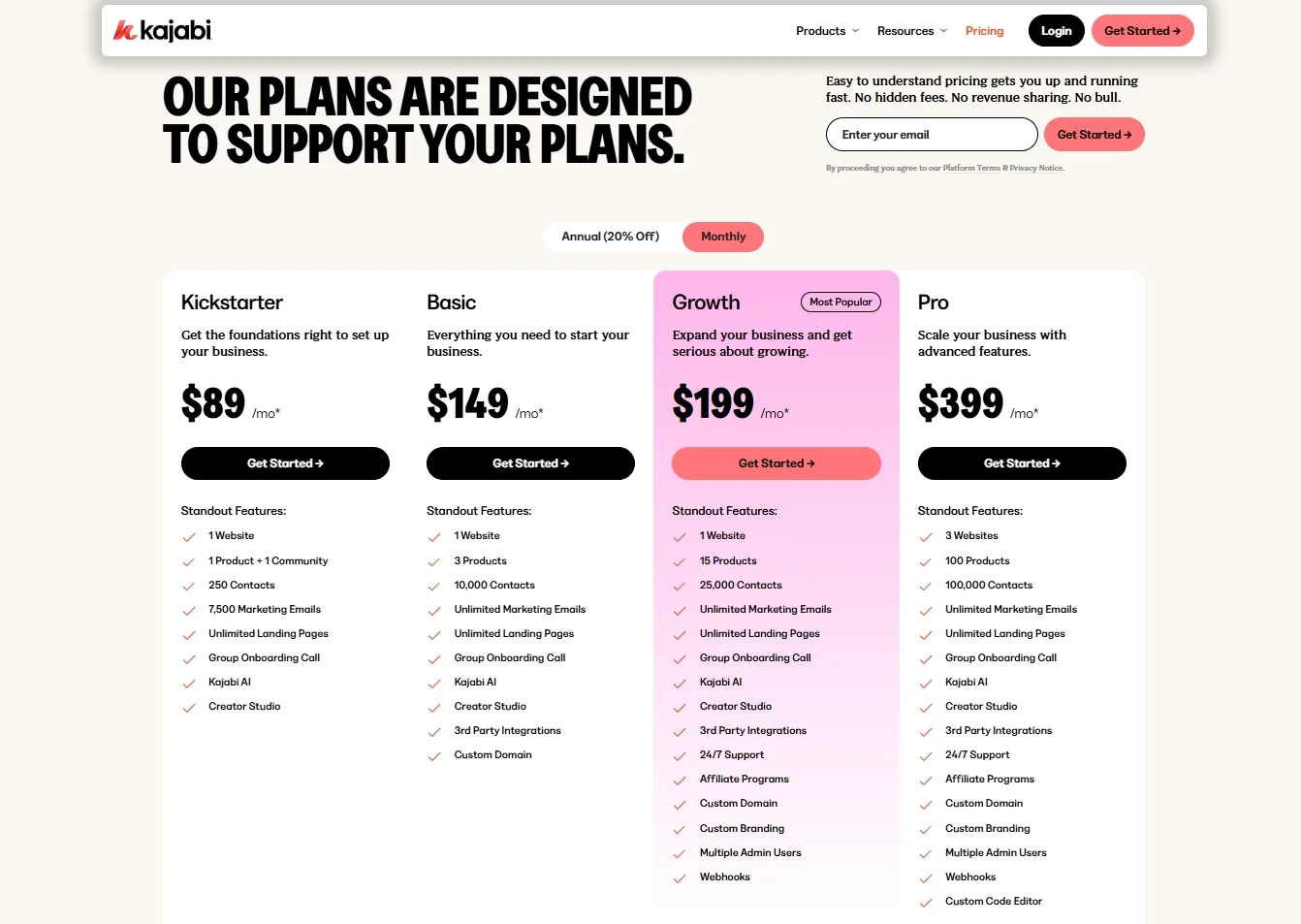
Here's our breakdown of Kajabi pricing to help you visualize how much it costs to run a website on Kajabi.
- The Kickstarter plan at $89/month is a new entry-level option aimed at beginners. It includes one website, 1 product, plus one community, 250 contacts, 7,500 marketing emails, and access to Kajabi AI and the Creator Studio. It’s ideal for those just starting out and looking for the essentials to get set up.
- The Basic plan is priced at $149/month and includes three products, 10,000 contacts, unlimited marketing emails and landing pages, a custom domain, and third-party integrations. It also provides access to a group onboarding call, making it suitable for creators ready to grow beyond the initial launch.
- At $199/month, the Growth plan is the most popular tier. It increases limits to 15 products and 25,000 contacts and introduces important features such as 24/7 support, affiliate program tools, custom branding, multiple admin users, and webhooks. This plan works well for growing teams and established creators who need more flexibility and automation.
- Finally, the Pro plan at $399/month is designed for large businesses. It supports three websites, 100 products, 100,000 contacts, and adds a custom code editor for deeper customization. All features from lower plans are included, making this tier ideal for agencies or brands running multiple digital assets.
In summary, Kajabi pricing is higher than many DIY platforms, but it offers strong value through its all-in-one feature set. Each plan is carefully scaled to match business needs, so you only pay for what you’re ready to use.
WordPress pricing
Unlike Kajabi’s all-in-one pricing model, WordPress pricing is flexible and depends on the choices you make during setup. While the core WordPress software is free to use, there are several other components you’ll need to pay for to build a fully functional and professional website. This modular approach gives you more control over your budget, but it also means costs can vary widely.
First, you'll need web hosting, which is essential to get your WordPress site online. Hosting plans can range from around $3 to $30 per month for shared hosting, or even higher for managed WordPress hosting (like WP Engine or Kinsta), which can cost $20 to $100+ per month.
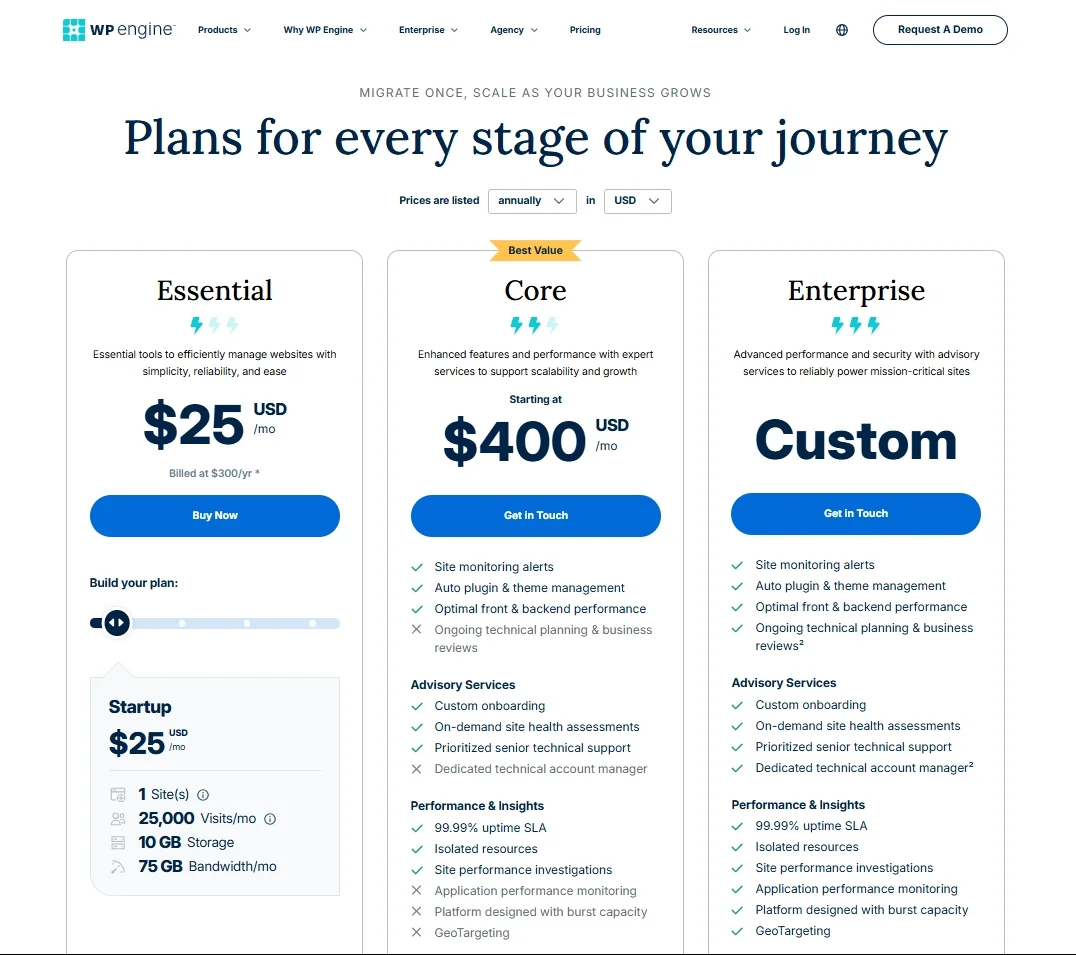
You may also need to budget for domain registration (typically $10 to $20 per year) and SSL certificates (free with some hosts, or paid if purchased separately). If you're not tech-savvy, hiring a developer or designer can also be a one-time or ongoing cost, depending on how customized your site needs to be.
On top of that, if you want premium features to enhance your website, you'll need to consider plugin pricing as well. Many essential plugins for SEO, backups, security, email marketing, and page building offer free versions, but the premium versions can range from $50 to $300+ per year, depending on your needs.
In summary, WordPress can be very affordable for basic sites, but for a robust business platform with all the tools you’d get from an all-in-one service like Kajabi, the total cost could end up being similar or even higher, especially when you factor in time, plugin licenses, and support. The flexibility is great, but it comes with added responsibility.
Kajabi vs WordPress: Ease of Use (Kajabi Wins)
📌 The verdict:
Between Kajabi vs WordPress in terms of ease of use, Kajabi clearly takes the lead. It’s designed for simplicity, offering a guided setup, an intuitive dashboard, and all-in-one functionality that’s perfect for beginners or busy entrepreneurs who want to get up and running quickly.
Kajabi ease of use
Kajabi is built with simplicity in mind, making it one of the most beginner-friendly platforms for online business owners. From the moment you sign up, Kajabi guides you through a clean, structured onboarding process. The dashboard is well-organized, with clear sections for products, website, marketing, contacts, and analytics, so you never feel lost.
We’ve found that even users with no tech background can set up a website, create a course, or launch a sales funnel without needing outside help. The drag-and-drop editor makes designing pages easy, and built-in templates speed up the process even more. Everything is accessible from a single login, so you don’t need to juggle multiple tools or platforms.
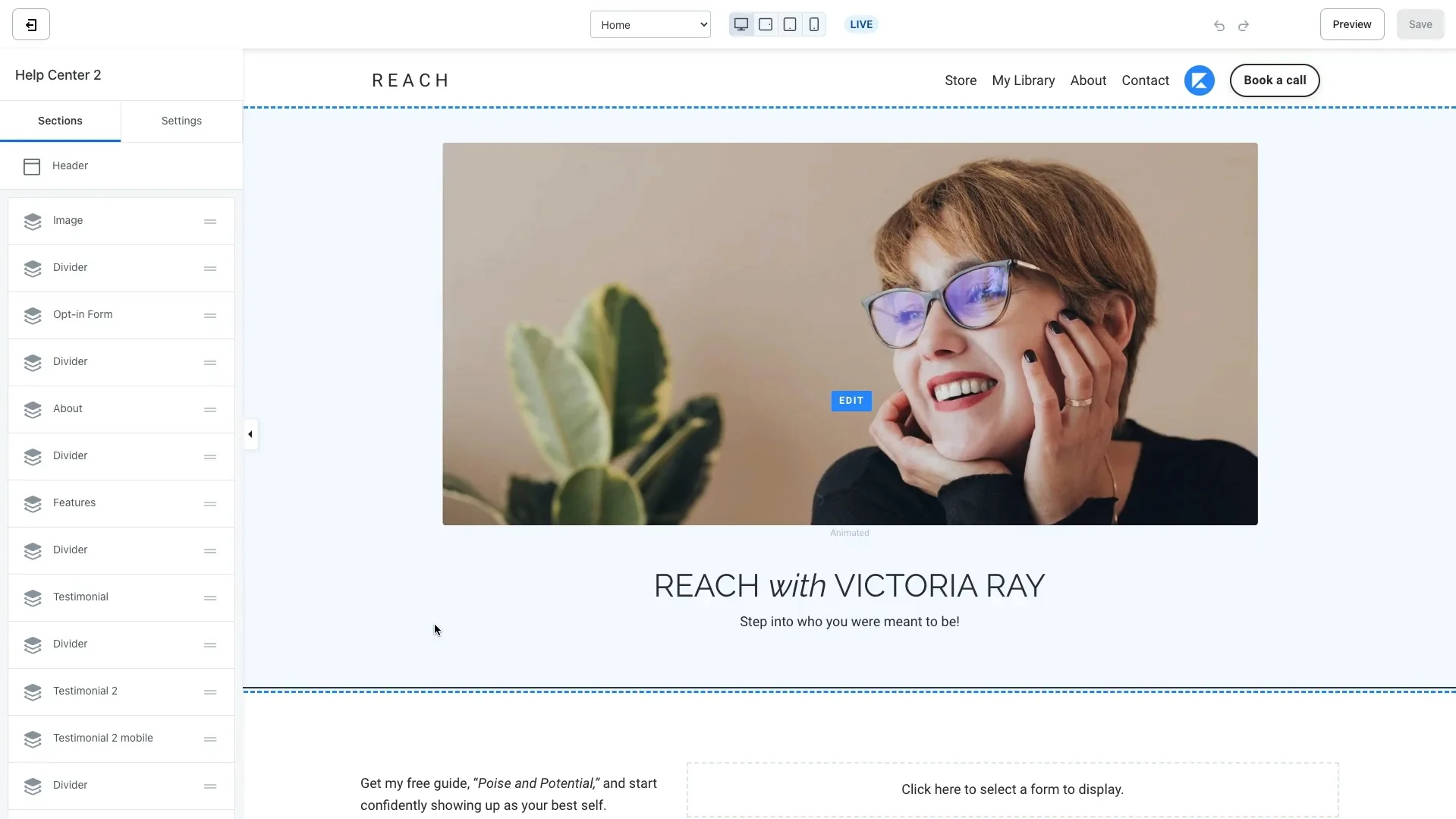
Kajabi also offers helpful prompts, tooltips, and video tutorials along the way, which we think is a big plus for beginners. Features like Kajabi AI and the Creator Studio add to the ease of content creation, allowing you to move quickly from idea to execution.
WordPress ease of use
On the other hand, WordPress offers unmatched flexibility, but it comes with a steeper learning curve, especially for beginners. Unlike Kajabi, WordPress requires you to handle multiple parts of your setup manually, such as choosing a hosting provider, installing WordPress, configuring themes, and selecting the right plugins for your needs. This process can be overwhelming if you're new to website creation.
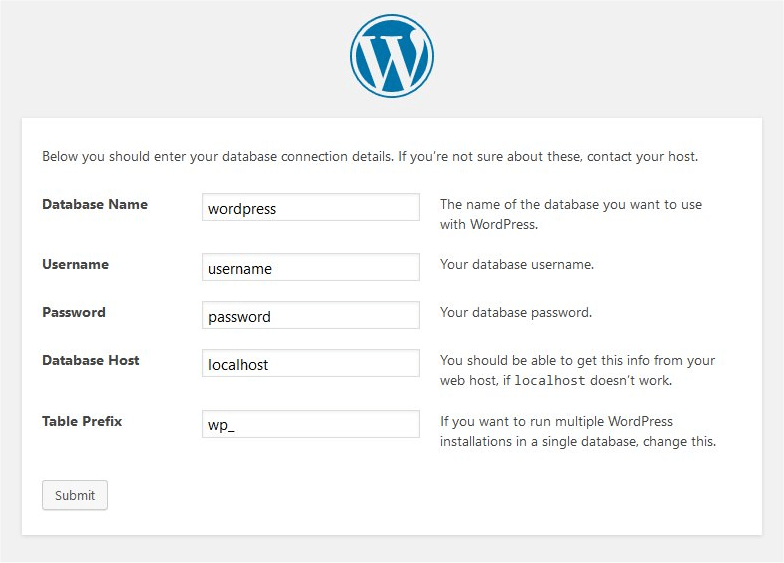
Once your site is up and running, the WordPress dashboard becomes more manageable. It’s relatively user-friendly, but not as streamlined or guided as Kajabi. You'll need to get comfortable with navigating different menus, managing plugins, and occasionally dealing with compatibility issues or updates. Customizing your site often requires using page builders like Elementor or Divi, which can simplify the experience, but these tools also have their own learning curves.
That said, WordPress does provide a lot of freedom. If you enjoy learning new tools and want to build a site exactly how you envision it, WordPress is a rewarding platform. There’s also a huge support community, with countless tutorials, forums, and video guides available online.
Kajibi vs WordPress: Hosting (Kajabi Wins)
📌 The verdict:
Kajabi wins in this competition between Kajabi vs WordPress for its simplicity and peace of mind. Hosting is fully managed, fast, and secure right out of the box with no setup or technical knowledge required. This is ideal for creators who want to focus on their business instead of worrying about downtime, server errors, or configuration.
Kajabi hosting
Kajabi offers fully managed hosting as part of every subscription plan, which means you never have to deal with third-party hosting providers, technical setup, or server maintenance. From the moment you sign up, your site is live on Kajabi’s secure and reliable infrastructure. This is a huge advantage for non-technical users who want to focus on content and business growth, not backend configurations.
Your Kajabi-hosted site comes with built-in SSL security, which helps protect user data and builds trust with your audience. It also includes automatic updates, daily backups, and performance optimization to ensure your site runs smoothly and loads quickly. There's no need to worry about installing extra security plugins or optimizing your server for speed since Kajabi handles it all behind the scenes.
WordPress hosting
Unlike Kajabi, WordPress does not include hosting by default, which means you’ll need to choose and set up your own hosting provider. This gives you more control over your website’s performance, but it also adds extra steps and responsibility to the process. Hosting affects your site’s speed, uptime, and security, so it’s a critical decision for any WordPress user.
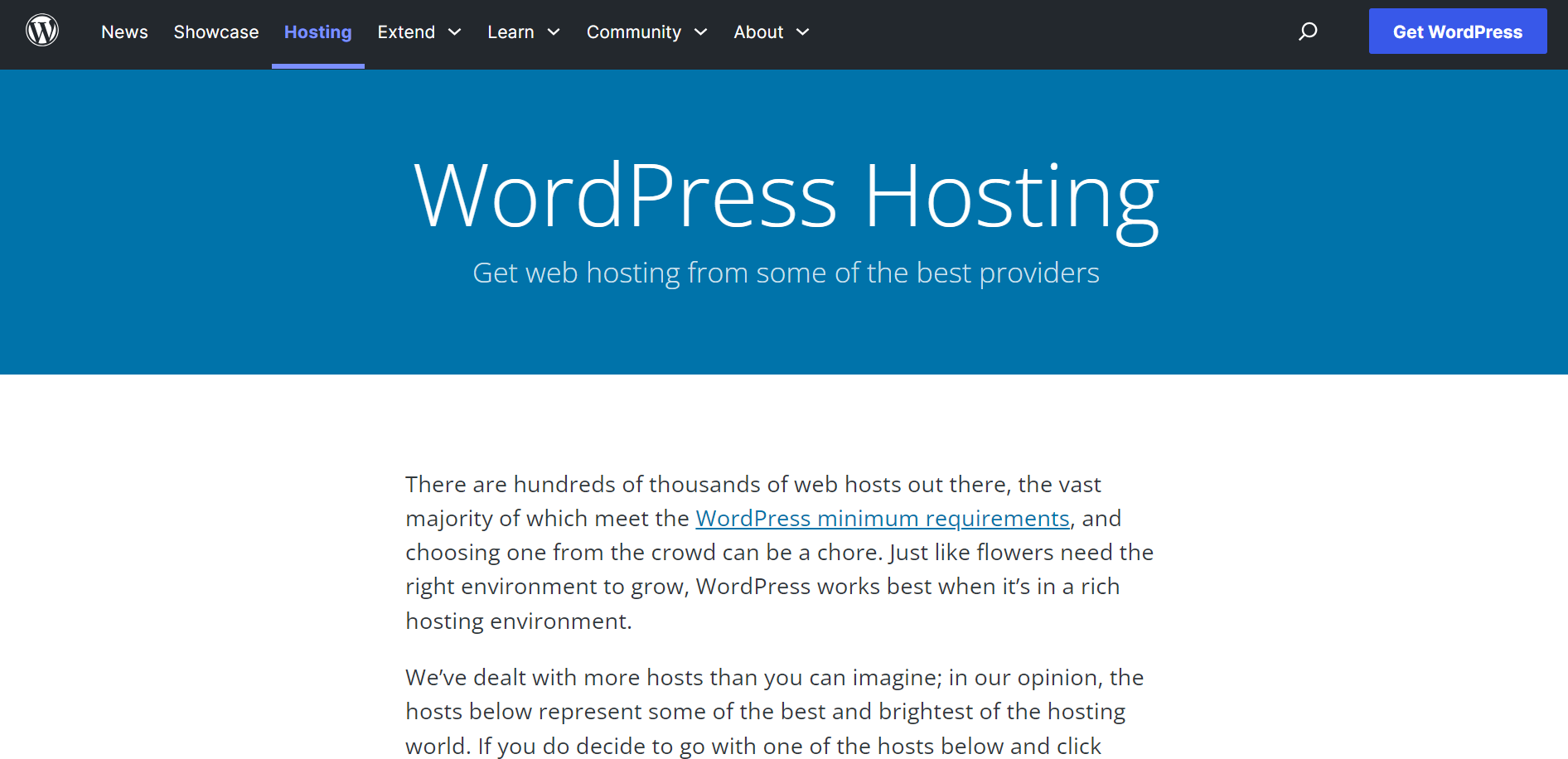
With WordPress, you’re also in charge of installing an SSL certificate (unless your host provides one for free), managing backups, monitoring uptime, and optimizing performance. Some hosts offer tools to make this easier, but you’ll still need to understand how your site is configured or hire someone who does.
Kajabi vs WordPress: Design & Customization (WordPress Wins)
📌 The verdict:
When it comes to design and customization between Kajabi vs WordPress, WordPress clearly takes the win. Its unmatched flexibility allows users to choose from thousands of themes, use powerful page builders, and even edit code for complete creative freedom.
Kajabi design & customization
Kajabi offers a clean and user-friendly design experience, making it easy for creators to build professional-looking websites without needing to write code. The platform provides a selection of pre-designed themes that are optimized for digital products, online courses, and personal branding. Each theme is responsive, which means your site will look great on both desktop and mobile devices.

Using Kajabi’s drag-and-drop page builder, you can customize pages by adding or rearranging elements like text blocks, images, videos, countdown timers, opt-in forms, and more. The editor is intuitive and visually guided, so you can see your changes in real time. While it doesn’t offer full design freedom like WordPress, it strikes a good balance between simplicity and creative flexibility.
However, it’s worth noting that Kajabi doesn’t offer deep access to the code or advanced layout customization unless you’re on the higher-tier plans. This might be a limitation for users who want a fully custom design or more unique page structures.
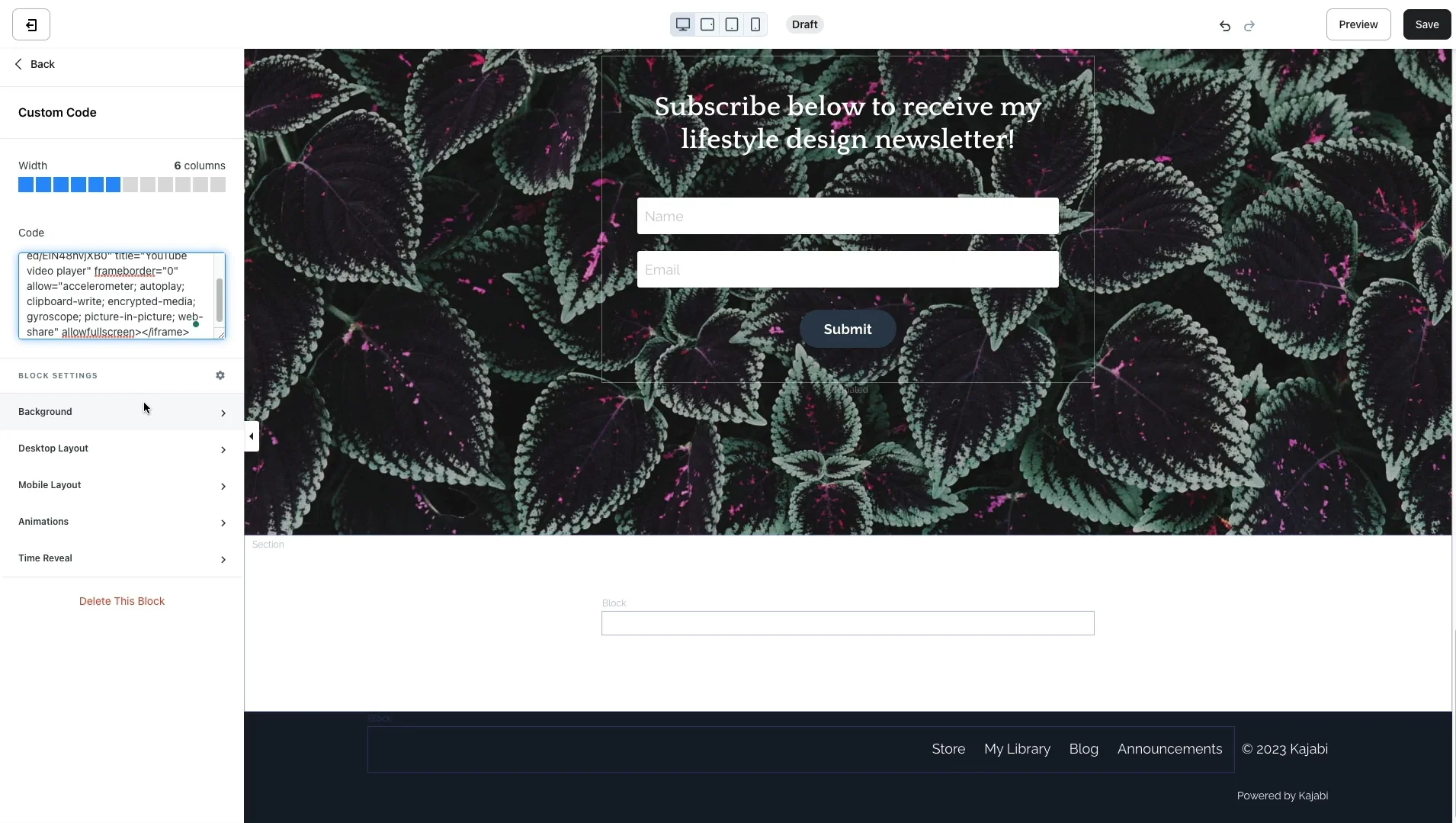
Overall, Kajabi is ideal for users who want fast, attractive, and easy-to-build websites without worrying about technical details. It’s a great choice if you’re focused on speed, branding consistency, and launching quickly.
WordPress design & customization
When it comes to design and customization, WordPress stands out as one of the most flexible platforms available. Whether you want to build a simple blog or a highly customized business website, WordPress gives you full control over your site’s appearance and structure.
At the core of WordPress customization is its massive theme ecosystem. There are thousands of free and premium themes to choose from, each with different layouts, styles, and features. Premium themes often come with advanced customization panels, allowing you to adjust colors, fonts, spacing, and page layouts with ease.
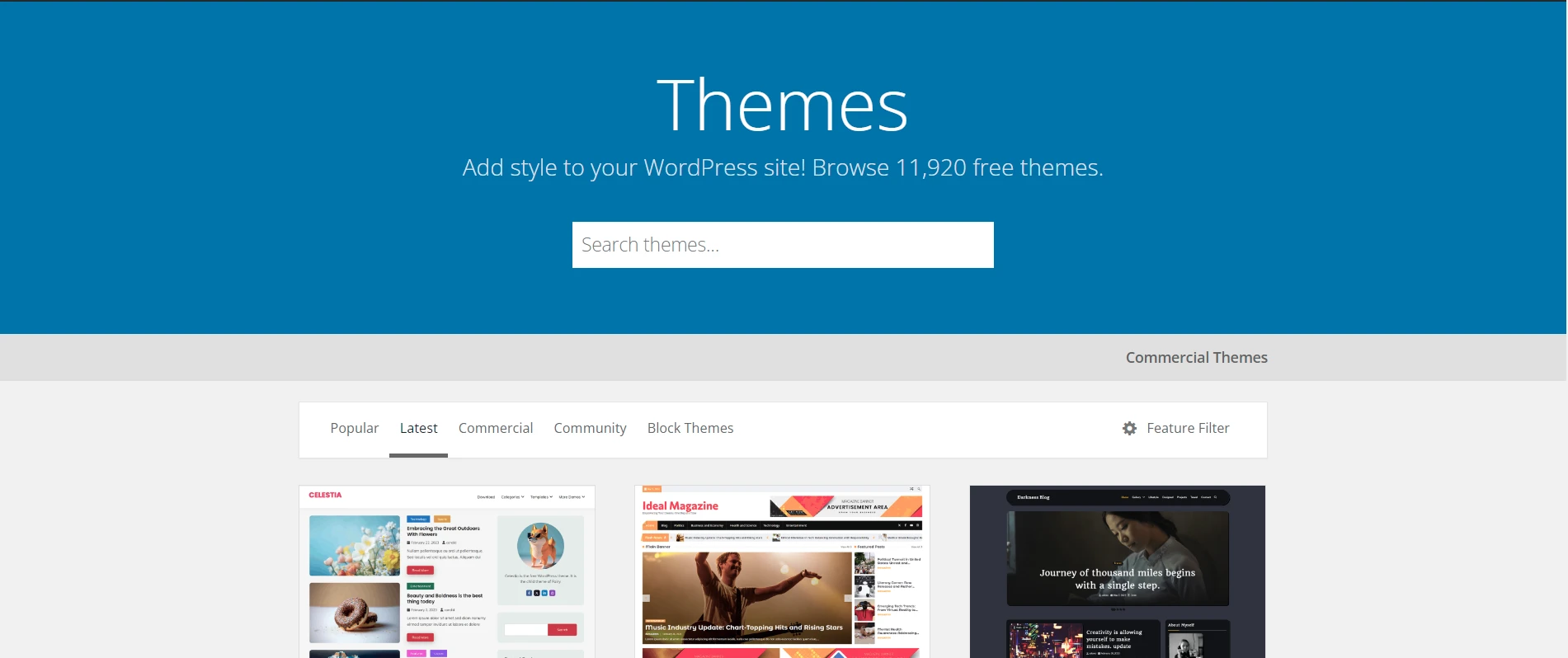
For even greater creative freedom, many users turn to drag-and-drop page builders like Elementor, Divi, or Beaver Builder. These tools allow you to visually design pages without touching a single line of code, while still offering more layout flexibility than Kajabi. And if you have coding skills or access to a developer, you can edit HTML, CSS, JavaScript, and PHP directly to create truly one-of-a-kind designs.
However, this level of customization comes with complexity. You may need to spend more time learning how everything works or troubleshooting design conflicts caused by plugins or themes. Still, for users who prioritize design freedom and unique branding, WordPress is hard to beat.
WordPress vs Kajabi: Digital Products Creation (Kajabi Wins)
📌 The verdict:
In terms of digital products creation between Kajabi vs WordPress, Kajabi wins in this category for its ease, simplicity, and purpose-built tools. Everything you need to create, manage, and sell digital products is built into the platform, making it ideal for coaches, course creators, and digital entrepreneurs who want to move quickly and focus on content.
Kajabi digital product creation
Kajabi is purpose-built for creators who want to sell digital products without dealing with complex tech setups. Whether you’re offering online courses, coaching programs, memberships, or digital downloads, Kajabi provides all the tools you need in one place—no plugins or third-party integrations required.
Creating a product in Kajabi is simple and streamlined. The platform offers an intuitive builder where you can upload videos, PDFs, audio files, and other resources. You can organize your content into modules and lessons, add quizzes, set up drip schedules, and even track student progress. Everything is presented in a clean, user-friendly interface, both for you and your audience.
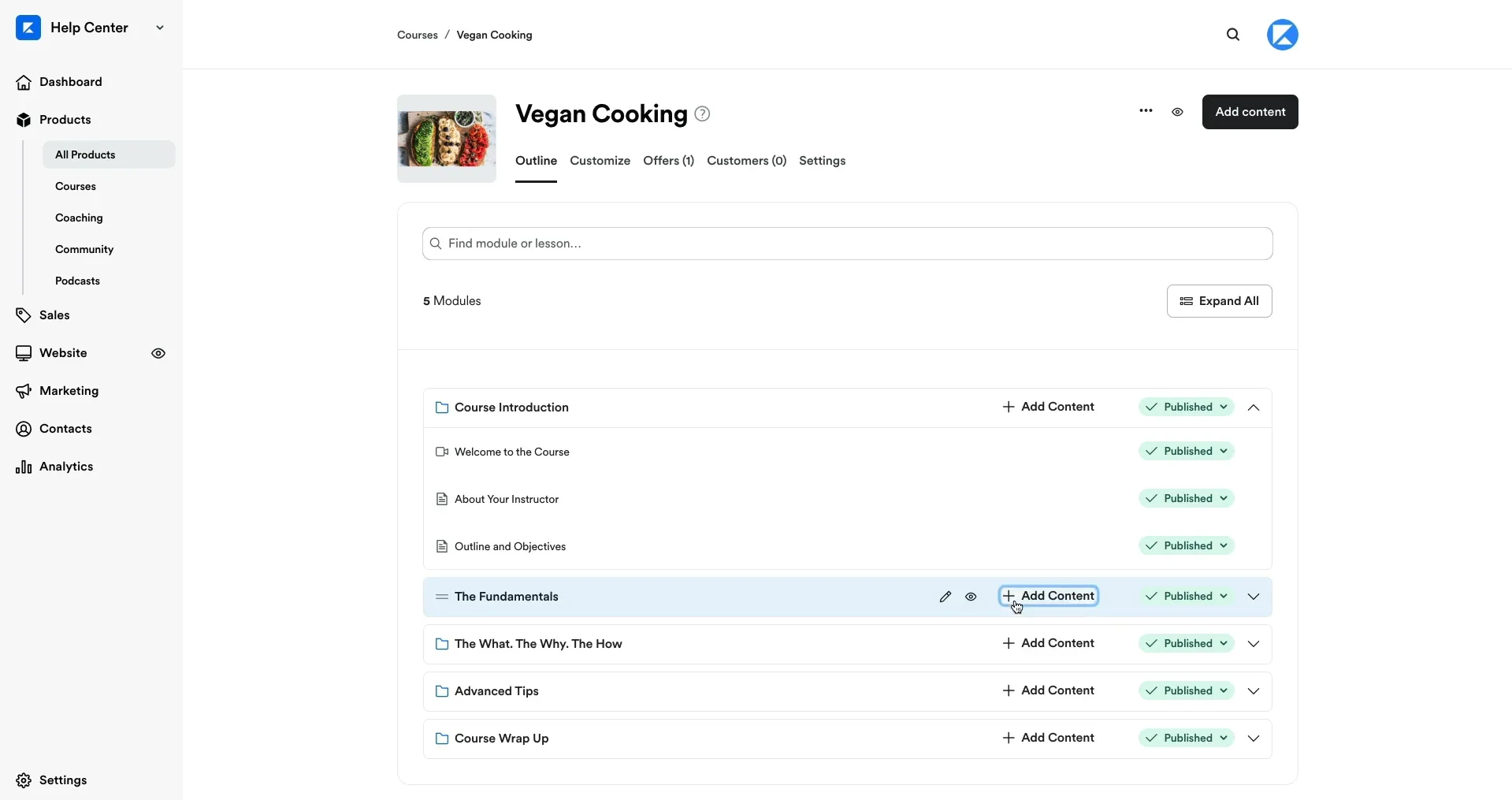
Another standout feature is the built-in member area that gives users a polished, password-protected portal to access their content. You can customize this area to match your branding and create a seamless experience from purchase to delivery.
Overall, Kajabi excels at making digital product creation fast, efficient, and accessible, even for beginners. It’s a perfect solution for creators who want to focus on content and growth, not on building the tech stack behind their business.
WordPress digital product creation
On the other hand, WordPress offers incredible flexibility for digital product creation, but it requires more setup and technical involvement compared to Kajabi. On its own, WordPress doesn’t include product-building tools, so you’ll need to install and configure third-party plugins to create and sell digital products like online courses, memberships, or downloads.
Here are some recommendations on WordPress plugins to sell digital products:
- If you want to sell online courses, consider LearnDash, LifterLMS, and LMS.
- If you want to sell memberships, consider MemberPress, Paid Membership Pro, or Restrict Content Pro.
- If you sell digital downloads like ebooks or templates, consider WooCommerce, SureCart, or Easy Digital Downloads.

The strength of WordPress lies in its customization potential. You can mix and match tools to fit your specific needs, create custom learning paths, and design every part of the user journey. But with that power comes complexity, especially if you’re not familiar with managing plugins, configuring settings, or handling conflicts between tools.
In summary, WordPress is ideal for advanced users or teams that want total control over their digital product platform. It provides you with the tools to build exactly what you want, but you’ll need to invest time and possibly seek developer support to ensure it all works smoothly.
Kajabi vs WordPress: Apps & Integrations (WordPress Wins)
In this section of our Kajabi vs WordPress comparison, let's talk about the apps & integrations that both platforms offer.
Kajabi apps & integrations
Kajabi offers a streamlined, all-in-one environment, but it also includes a solid lineup of native integrations to extend its functionality. These integrations are designed to work seamlessly with the platform, so you don’t need to worry about complicated setup processes or compatibility issues.
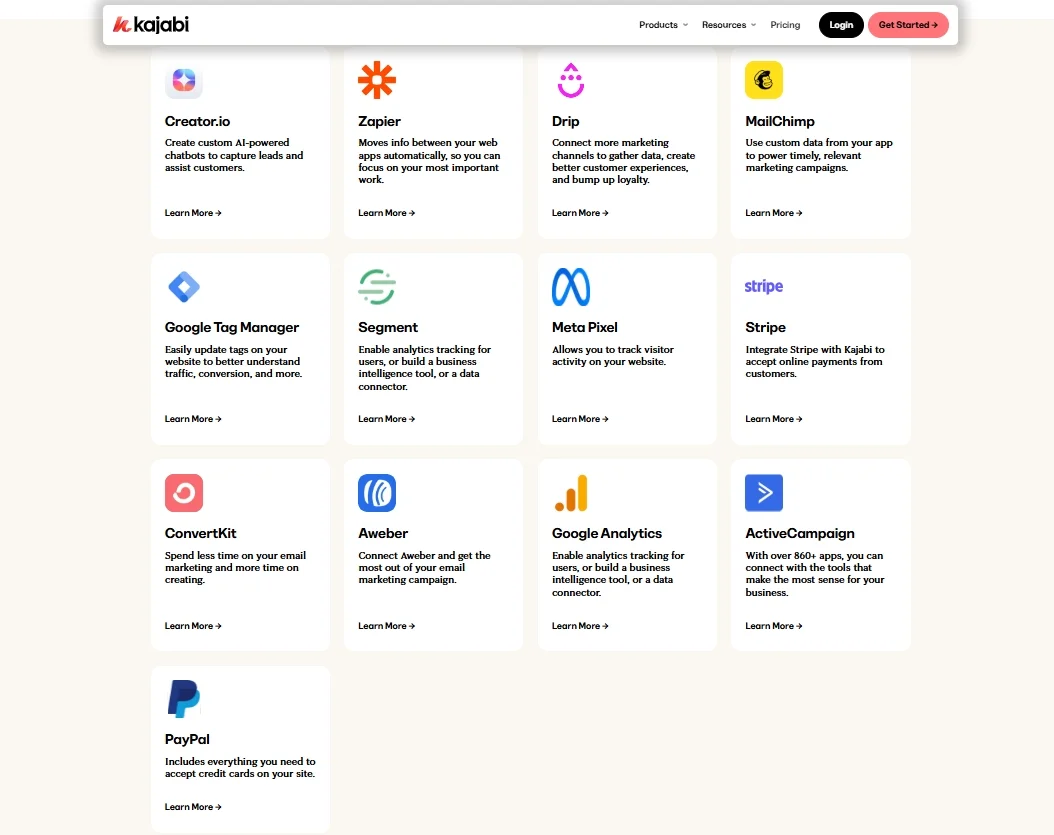
Out of the box, Kajabi supports direct integration with popular tools like:
- Email marketing platforms: ActiveCampaign, Mailchimp, Drip, and ConvertKit
- Payment processors: Stripe and PayPal for seamless checkout experiences
- Analytics & tracking: Google Analytics and Facebook Pixel for performance insights and ad tracking
- Automation: Zapier, which connects Kajabi to thousands of other third-party apps
These integrations make it easy to manage your sales funnels, email campaigns, and analytics without relying on external plugins or custom development. Kajabi also includes its own robust tools for email automation, landing pages, and contact management, reducing the need for extra tools in many cases.
While Kajabi doesn’t have a massive app store or plugin directory like WordPress, the integrations it does offer are carefully selected and optimized to cover the most common needs of digital entrepreneurs. This ensures a smoother experience and fewer technical headaches.
WordPress apps & integrations
WordPress is unmatched in its ability to integrate with virtually any tool, platform, or service you can imagine. Thanks to its open-source nature and massive ecosystem of plugins, WordPress gives users access to over 60,000 free plugins in the official directory, plus thousands more from third-party developers and marketplaces.
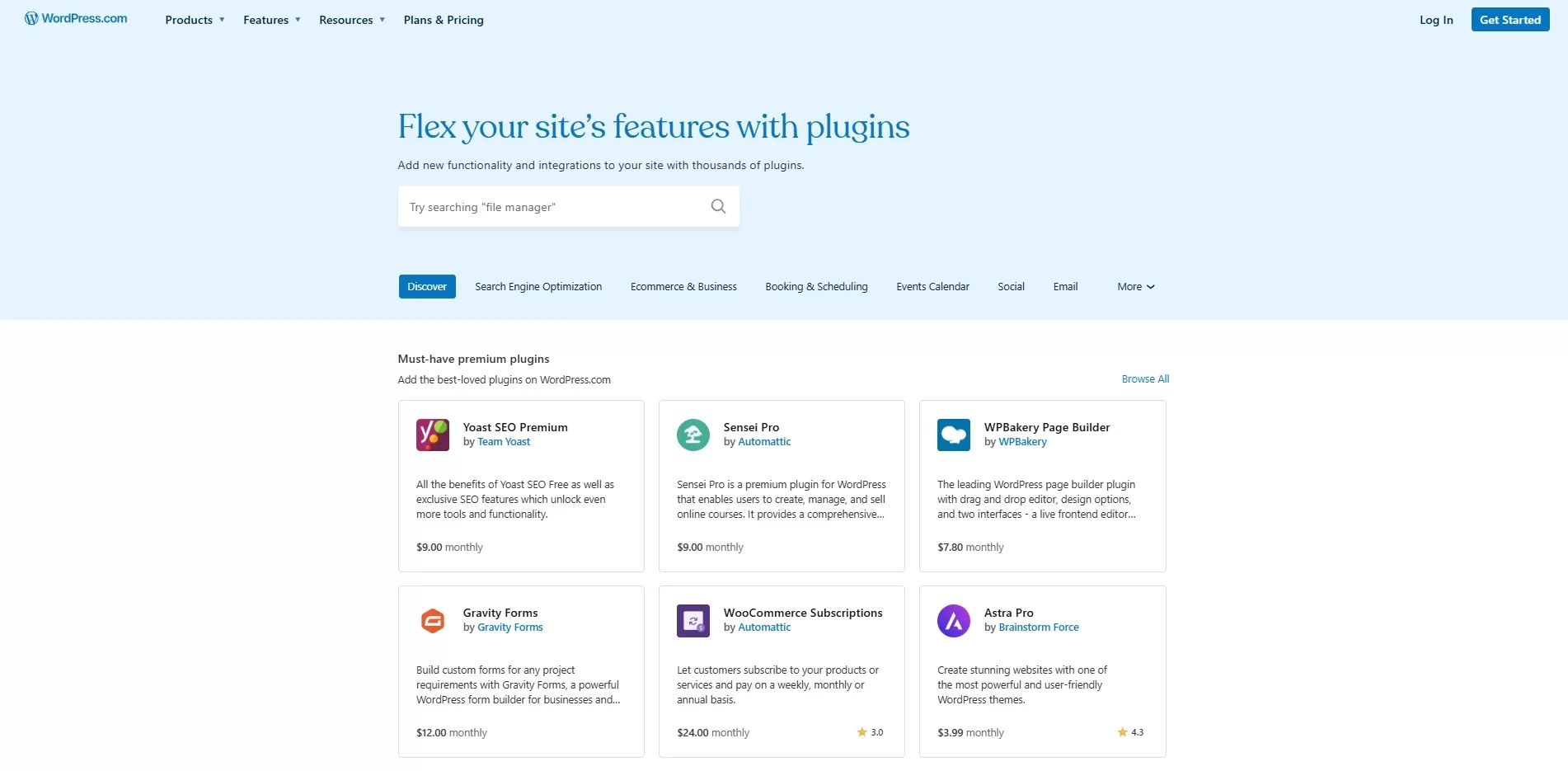
Because WordPress is highly customizable, you can extend its capabilities as much as you want, either by installing ready-made plugins or developing custom solutions. This makes it ideal for users who have specific workflows, require niche tools, or want to integrate with proprietary systems.
However, the trade-off is complexity. Not all plugins are equally reliable, and some may conflict with others. You’ll also need to keep your plugins updated, troubleshoot any issues that arise, and occasionally adjust settings to ensure everything works smoothly.
Kajabi vs WordPress: Support (Kajabi Wins)
Having reliable support can make or break your experience with a platform, especially when technical issues arise or you're launching a product on a tight deadline. In this section, we’ll compare how Kajabi vs WordPress handle customer support, what kind of help you can expect, and how accessible those resources are when you need them.
Kajabi support
Kajabi offers a comprehensive and reliable support system that’s designed to help creators succeed, whether you’re launching your first product or scaling an existing business. This platform provides a wealth of self-help resources through its Help Center, which includes detailed articles, step-by-step guides, and video tutorials covering every feature of the platform. These resources are easy to search and regularly updated, making it quick to find answers on your own.
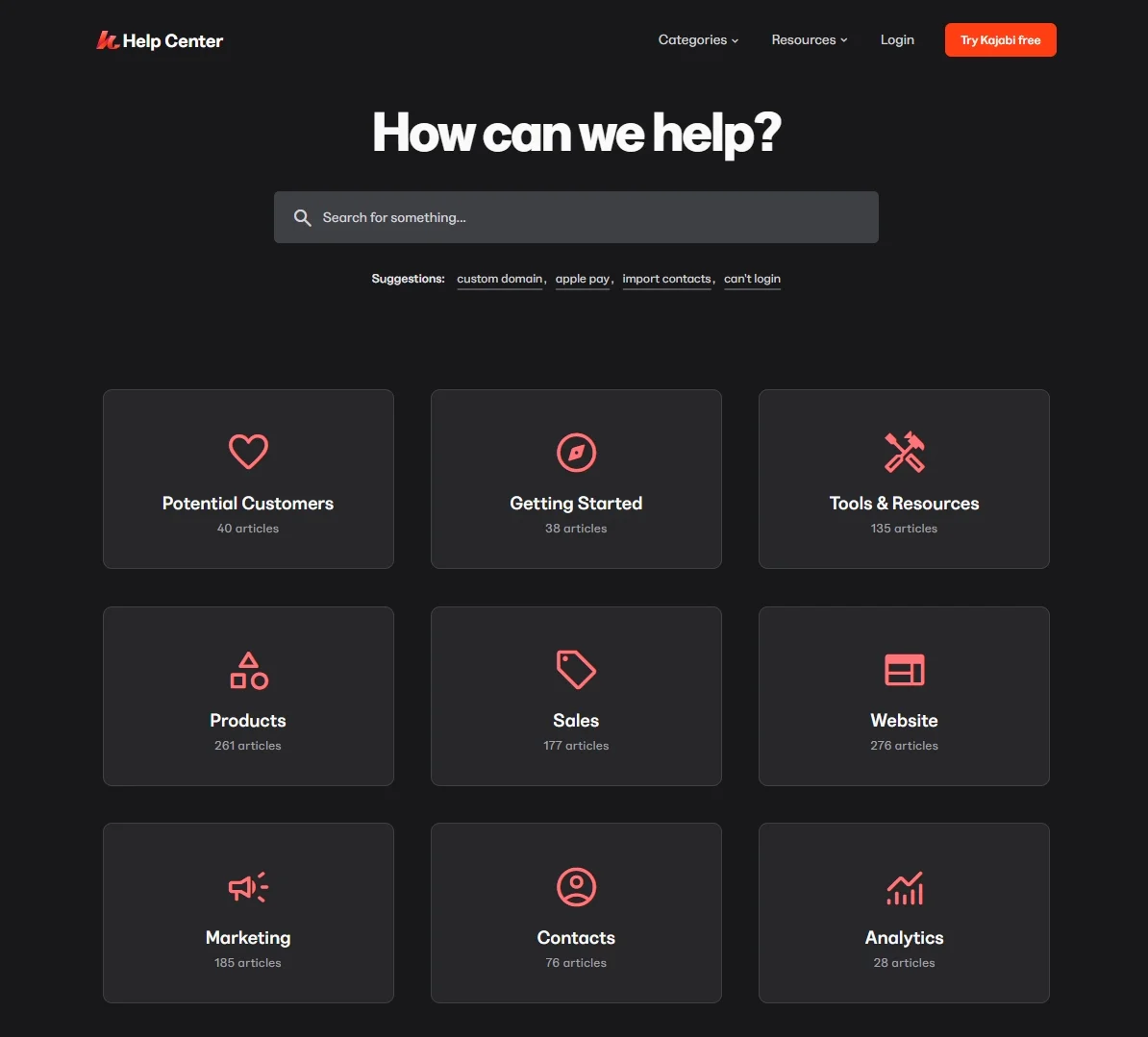
For a more structured learning experience, Kajabi offers Kajabi University, a free online learning hub with full courses on building products, launching marketing campaigns, and growing your brand. Whether you're a beginner or an advanced user, these courses help you get the most out of Kajabi.
Kajabi also hosts regular webinars, onboarding sessions, and live Q&A events where you can learn from experts and ask questions in real-time. Plus, users can connect with others in the Kajabi Community, a space to share strategies, get feedback, and learn from other creators.
WordPress support
WordPress has one of the largest and most active support ecosystems in the world, with the WordPress forum as a valuable resource for general questions, troubleshooting, and advice from other users. You’ll also find a massive library of free tutorials, YouTube videos, blog posts, and online courses, created by developers and the global WordPress community. These resources are helpful, but you may need time and effort to find answers that match your specific setup.
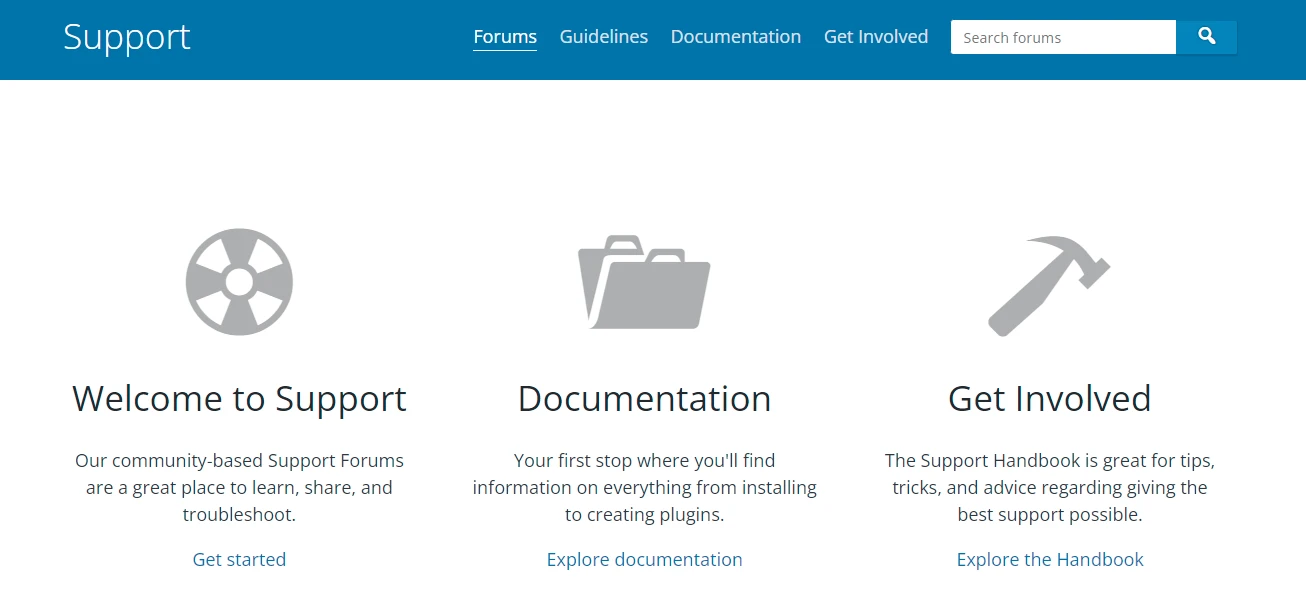
For users who need fast, hands-on help, hiring a WordPress expert or developer is often the go-to solution. There are also managed WordPress services that offer premium support and maintenance, but these come at an added cost.
In summary, WordPress support is vast but decentralized. You have access to a wealth of information and community help, but you’re also more responsible for finding answers, managing support contacts, and solving issues on your own or with paid assistance. It’s a great system for experienced users, but it can be overwhelming for beginners.
Kajabi vs WordPress: Which is suitable for you?
In short, we would recommend Kajabi for:
- Course creators who want to sell online classes with built-in video hosting and student tools.
- Coaches and consultants looking for an all-in-one system to manage their website, email marketing, and digital products.
- Entrepreneurs and solopreneurs who prefer not to deal with tech setup, hosting, or maintenance.
- Non-technical users who value ease of use over deep customization.
On the other hand, consider using WordPress if you are:
- Tech-savvy users or developers who want full control over every aspect of their website.
- Bloggers and content marketers who need advanced SEO tools and content flexibility.
- Bloggers and content marketers who need advanced SEO tools and content flexibility.
- eCommerce sellers who want to build a store with WooCommerce or other plugins.
Lastly, if you like this article, please don't forget to check out other articles on our LitExtension blog for more expert tips and insights!
Kajabi vs WordPress – FAQs
What is better, WordPress or Kajabi?
Kajabi is better than WordPress if you want an all-in-one, user-friendly platform with built-in tools for online courses, digital products, and marketing. It’s ideal for creators who want to launch quickly without technical hassle.
On the other hand, WordPress is better than Kajabi if you need full customization, more design freedom, and access to a wide range of plugins. It’s the preferred choice for developers or users who don’t mind managing hosting and setup themselves.
Can you use Kajabi with WordPress?
Yes, you can use Kajabi and WordPress together. Many creators build their main website or blog on WordPress and host their courses or membership products on Kajabi. You can connect the two platforms using links, custom domains, or even embedded forms, giving you the best of both worlds, WordPress flexibility with Kajabi’s product delivery tools.
Who is Kajabi best for?
Kajabi is best for course creators, coaches, consultants, and digital entrepreneurs who want a streamlined platform to sell and deliver their products. It’s ideal for users who prefer simplicity and want everything, website, email marketing, automation, and product hosting, in one place. No coding or plugin management required.
Should I use WordPress?
Yes, you should use WordPress if you:
- Want maximum control and customization
- Are comfortable managing plugins and hosting
- Need advanced features or integrations not available in Kajabi
- Plan to scale a content-heavy, SEO-focused, or eCommerce site
It’s a great option for developers, tech-savvy marketers, or businesses that need a custom web presence and don’t mind spending more time on setup and maintenance.

